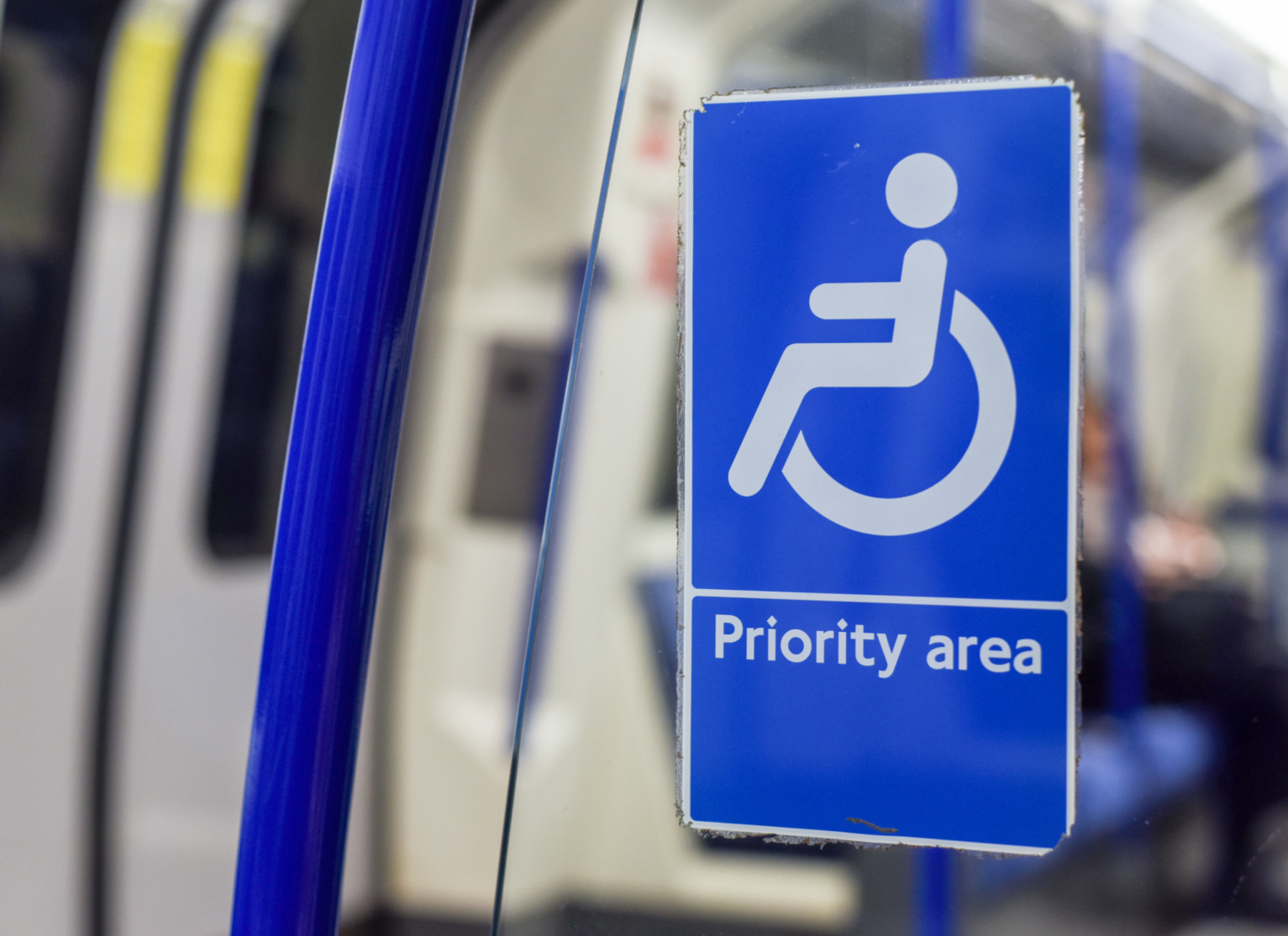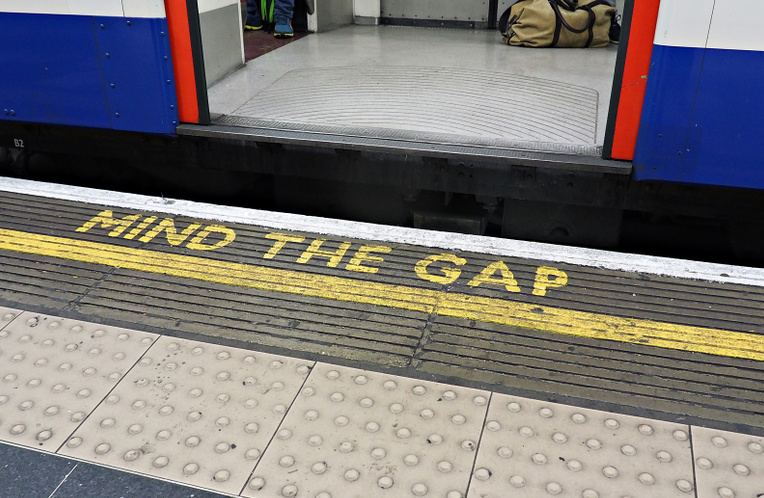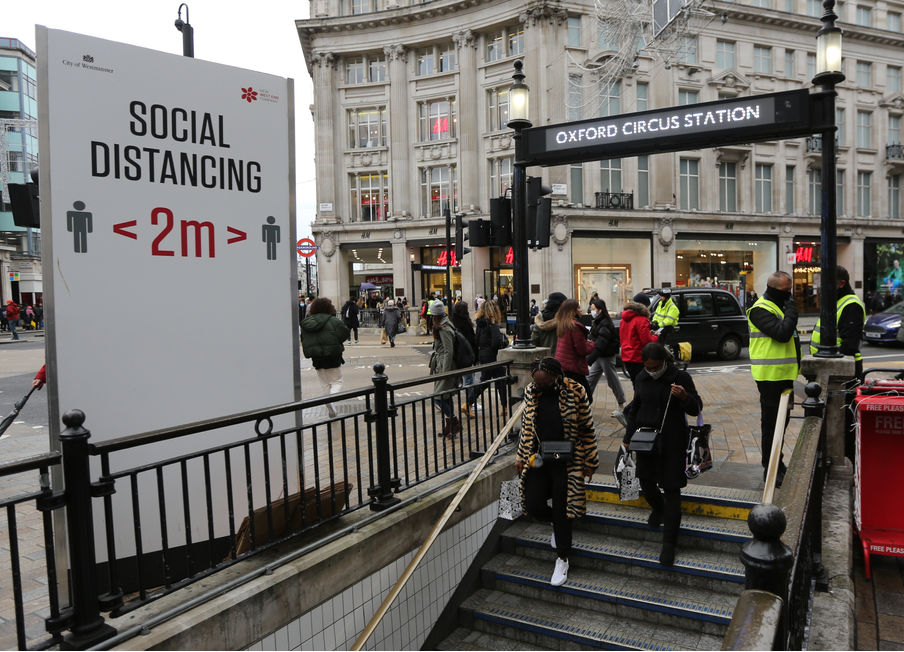DISABILITY GRANTS is a SELF HELP Resource
SEARCH the website to find ANSWERS to your QUESTIONS Click Here! FAQ >
FTC Disclosure
If you make a purchase via a link on this site, Disability Grants may receive a small commission on the transaction - at no added cost to you. Thank you!
Accessible Transport
London Underground
Despite being the best city in the UK for public accessible transport, a shocking 69% of London tube stations are still not fully accessible.
New research by specialist lawyers Bolt Burdon Kemp has uncovered how the Covid-19 pandemic has had a drastic effect on the lives of the disabled.
This is their press release.....
Disabling transport: only 31% of London
Underground stations are fully accessible
- With only 31% of London Underground stations fully accessible in 2021, the network has only seen a 6.9% improvement in accessibility over two years.
- 17% of disabled respondents state that public transport services are fairly or very poor.
- During Covid-19, 1 in 5 disabled people felt unsafe when using public transport.
- 67% of disabled people say they’re unaware of TFL’s accessibility lanyard schemes.
The Covid-19 pandemic has had a drastic effect on the lives of disabled people. From their medical needs being forgotten and masks making communication difficult, to others’ lack of social distancing making it harder to travel in public.
This latter point resonates with a research study run by specialist lawyers Bolt Burdon Kemp.
They consistently found that commuter journeys taken via wheelchair took longer than the same journey taken by an able-bodied person. A new investigation has found that more still needs to be done on public transport for disabled people.
There’s only been a 6.9% improvement in accessible public transport
According to Transport for London, 84 out of 270 stations are currently fully accessible (as of August 2021).
77 were listed as fully accessible when the law firm carried out their research in 2019. This means 29% of underground stations were accessible in 2019, and 31% in 2021 – an improvement of a mere 6.9% over two years.
This is despite the Transport Committee finding in October 2019 that “the connectivity of infrastructure and services across different transport modes and providers needs to be improved, in order to enhance the journey experience of disabled and older passengers.
Reports by Transport Focus, the Department for Transport and the Research Institute for Disabled Consumers have uncovered that travelling on public transport continues to be difficult for disabled passengers.
Public transport is failing disabled passengers
Transport Focus’s Transport User Panel found that, while most people surveyed about public transport in their local area rated the services as very or fairly good (70% disabled and 74% able-bodied), disabled passengers were more likely to have a negative experience.
- 17% of disabled respondents (versus 14% of able-bodied respondents) rated services as fairly or very poor.
- Only 37% of disabled people said they found it easy to use public transport in their area compared to 54% of able-bodied people.
- 15% of disabled people said they found it difficult, versus 7% of able-bodied people.
- 26% of disabled people said their local public transport limited their access to employment opportunities, compared with 18% of able-bodied people.
- 70% of disabled people said they would like to use public transport more than they currently do (compared to 54% of able-bodied people).
- 62% of disabled people said they’d travel more if public transport was easier for them to use (versus 41% of able-bodied people).
1 in 5 disabled people, public transport felt unsafe during Covid-19
When asked about travelling on public transport during Covid-19, disabled people expressed more trepidation than able-bodied people. Most notably, 1 in 5 (20%) disabled people said they felt unsafe (compared to 14% of able-bodied people).
What’s more, 67% of disabled people said they weren’t aware of the various Transport for London lanyard schemes for people with hidden and/or visible disabilities.
- 45% of disabled people who hadn’t made a train journey during Covid-19 said they felt it wouldn’t be safe to do so.
- 41% of disabled people (versus 47% of able-bodied people) said they’d use public transport as much, or more than before once enough people had been vaccinated.
- 25% of disabled people (versus 20% of able-bodied people) said they felt unsafe using buses during Covid-19.
- 52% of disabled people said (in August 2020) they were unsure about returning to public transport after Covid-19 travel restrictions were fully removed.
- 49% of disabled people said they don’t trust government advice for using public transport.
2 in 5 (61%) disabled people will likely not return to using public transport after Covid-19
When asked by the Research Institute for Disabled Consumers, only 39% of disabled people expressed a willingness to return to using public transport once Covid-19 travel restrictions were fully relaxed. 52% said they were unsure.
This is despite 74% of them stating they normally use public transport (either pre- or post-Covid-19 restrictions). The largest percentage who said they hadn’t taken public transport after Covid-19 restrictions initially eased (as of August 2020), was in Scotland, at 44%.
- 37% in London.
- 33% in Northern Ireland.
- 30% in Northern England.
- 28% in Southern England.
- 25% in the Midlands, Wales and East of England.
The behaviour of other passengers is a major worry for disabled people
The Research Institute for Disabled Consumers also asked respondents what would encourage them to use public transport the most. The largest percentages - 28% each - said it would be if other passengers wore PPE (personal protective equipment) and if there was social distancing inside the vehicle. In comparison, the cleanliness of public transport was only chosen by 20% of respondents.
- 47% of Londoners, 42% of those in Northern Ireland and 39% of those in Scotland said they’d be encouraged to use public transport if other passengers wore PPE.
- 41% of Londoners and 31% of those in Scotland said they’d be encouraged to use public transport if there was social distancing in the vehicle.
- 24% of those in the Midlands, Wales and East of England said the same.
“The past 18 months have been incredibly challenging for the disabled community. Even before the pandemic, access to public transport was limited and now people are facing those difficult journeys whilst also feeling very exposed and at risk.
When we commissioned our Going the Extra Mile campaign back in 2018 the results – that it took a wheelchair user longer to commute across London compared to an able-bodied person – were disappointing if not surprising.
The fact that the disabled community is still struggling to safely access public transport is beyond frustrating. For some it will means increased costs as they are forced to rely on other forms of transport. For others these lost hours add up across a week and have a massive impact on their ability to work and enjoy the same amount of family and leisure time that the able-bodied community do.
It is our hope that by continuing to shine a light on this ongoing issue that positive change may happen.”
Victoria Oliver, Head of the Spinal Injury team at BBK
Methodology:
The following reports were used to find the statistics quoted:
Accessible Transport: A Better Normal (July 2021 – Transport Focus)
Disabled Passengers During the Pandemic (December 2020 – Transport Focus)
Covid 19 Transport Summary Report (August 2020 - Research Institute for Disabled Consumers)
Information on number of accessible stations was obtained from the TFL website.
16th September 2021





